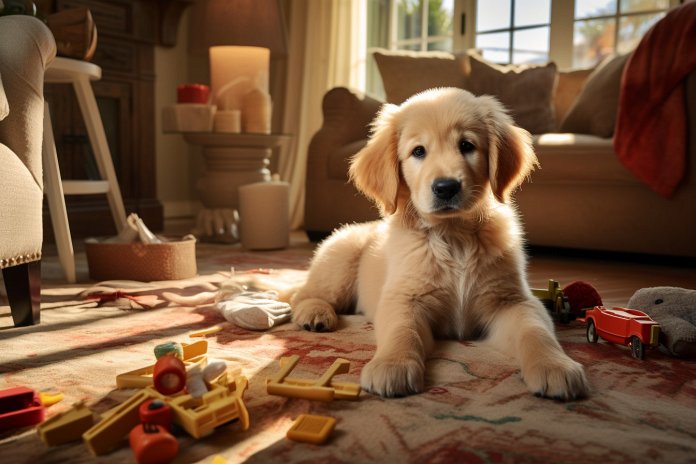
When it comes to animals with impressive memories, we usually think of elephants, dolphins, and horses. However, dogs actually have a remarkable capacity to remember and recollect. Their strong senses, particularly smell and hearing, play a major role in this. In this article, we’ll explore the science behind canine memory, their behavior patterns, and some amazing examples of dogs recalling people and places from the past.
Signs That a Dog Remembers Things from the Past
A dog’s behavior in response to a memory trigger depends on whether it represents a positive or negative experience. For positive experiences, a dog will become alert, focused, and may wag its tail. They may run towards the trigger and sniff intently. There will be audio cues like barking or whining, and signs of overexcitement. On the other hand, negative memories may cause increased alertness, growling, aggression, or fear-based behaviors.
Body Language
Some indications that a dog is remembering something from their past include being alert, whining, shaking, panting, and wagging their tail. Other signs may include aggressive behavior, pulling on the leash, and not listening to commands.
History of Dogs’ Memories
The extent to which dogs remember their past depends on their early experiences. Puppies that remain with their mother for the first 8 weeks tend to remember her and their siblings in later life. Similarly, females who are with their puppies for 8 weeks and beyond imprint a memory of them. There are countless stories of dogs remembering humans they haven’t seen for a long time, such as military reunions or puppies recognizing their mother and siblings on their first birthday.
The Science Behind Dogs Remembering Things
Dogs have a unique mechanism for memory called imprinting, which relies on sight and smell. This ability develops during the first 8 weeks of a puppy’s life when they bond with their mother. Different breeds have varying abilities to remember, with Border Collies, German Shepherds, Labradors, and Golden Retrievers being known for their strong memory and trainability.
Training a Dog’s Memory
All breeds have the potential for good memory, and positive reinforcement techniques are key to effective training. For recently-weaned puppies, basic training like sitting and responding to their name is important. For negative memories, controlled exposure to triggers with encouragement can help dogs disassociate the negative aspect of the memory and build confidence in challenging situations.
“Remembering the past is not just a canine skill; it’s a window into their emotions and experiences.”

Tips & Things to Know
1️⃣ Dogs have impressive memories: After reading this text, readers might want to know that dogs have a remarkable capacity to remember and recollect. Their strongest senses, particularly smell and hearing, play a significant role in this.
2️⃣ Signs of positive and negative memories: Readers should be aware of the signs that indicate whether a dog is remembering a positive or negative experience. Positive memories can be recognized by increased alertness, raised ears, wagging tail, and running towards the trigger. Negative memories are characterized by dropped ears, a flat tail, growling, aggression, or withdrawal.
3️⃣ Training a dog’s memory: Readers who want to harness their dog’s memory abilities can use positive reinforcement techniques for effective training. Rewards, such as treats or extra attention, can be used to teach basic behaviors and create positive associations. Dealing with negative memories requires patience and controlled exposure to the trigger, helping the dog disassociate the negative aspect of the memory.
Frequently Asked Questions, Answered ✅
1. What are signs that a dog remembers something from the past?
– Signs that a dog remembers something from the past include increased alertness, raised ears, wagging tail, running towards the trigger of the memory, sniffing intently, barking, whining or crying, and signs of overexcitement such as rapid breathing and excessive panting.
2. How do dogs behave when they recall a positive experience from the past?
– When recalling a positive experience, dogs demonstrate increased alertness, run towards the trigger of the memory, sniff intently, may jump up if it’s a person they recognize, bark to indicate urgency, and show signs of overexcitement such as rapid breathing and excessive panting.
3. How do dogs behave when they recall a negative experience from the past?
– When recalling a negative experience, dogs demonstrate increased alertness accompanied by dropped ears, a flat tail, and growling. They may show signs of aggression or fear, such as unusual aggression, withdrawal, or behaviors indicative of fear.
4. What are some indications that a dog is remembering something from their youth?
– Some indications that a dog is remembering something from their youth include being alert, whining, shaking, panting, and wagging their tail.
5. How do dogs imprint memories and remember things?
– Dogs imprint memories through a process that utilizes the senses of sight and smell. Their ability to imprint depends on their experiences as a puppy, particularly during the first eight weeks of life. Different breeds have varying abilities to remember, with Border Collies, German Shepherds, Labradors, and Golden Retrievers known for their memory-building and recollection abilities. Positive reinforcement techniques are key to training a dog’s memory effectively.